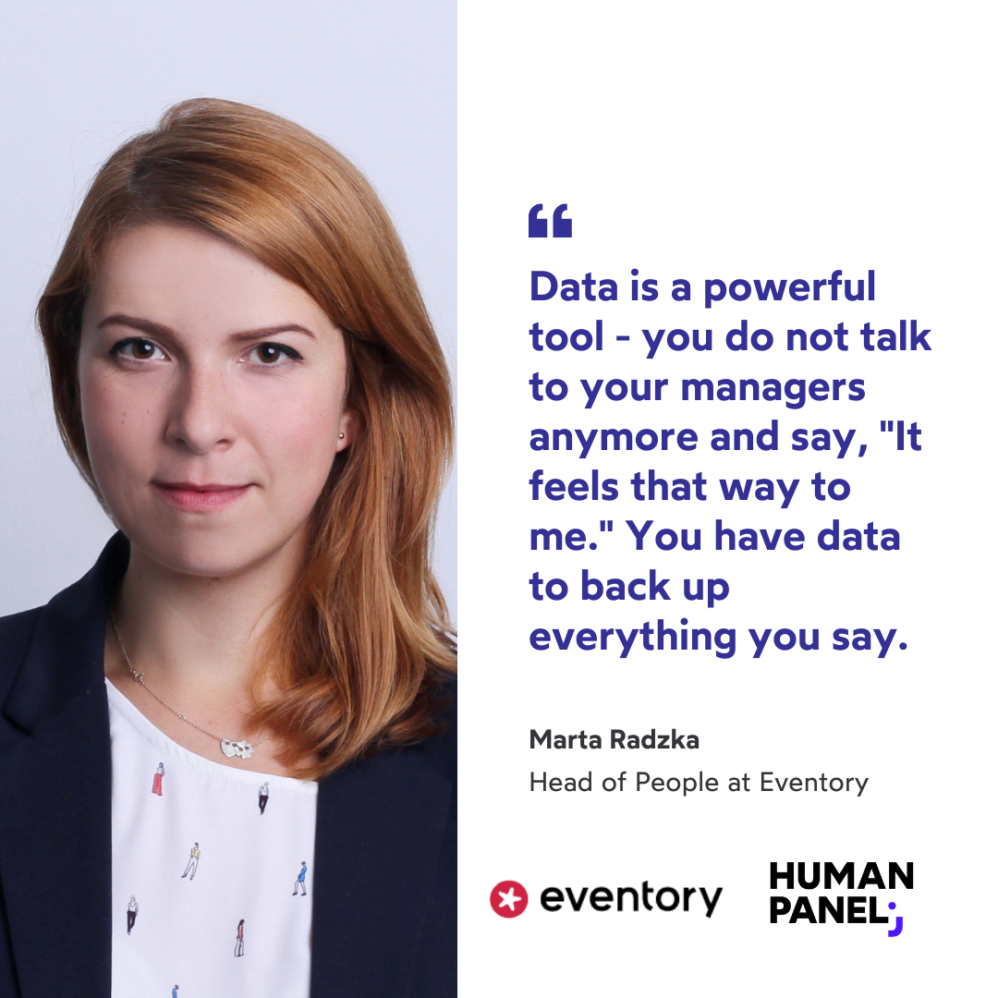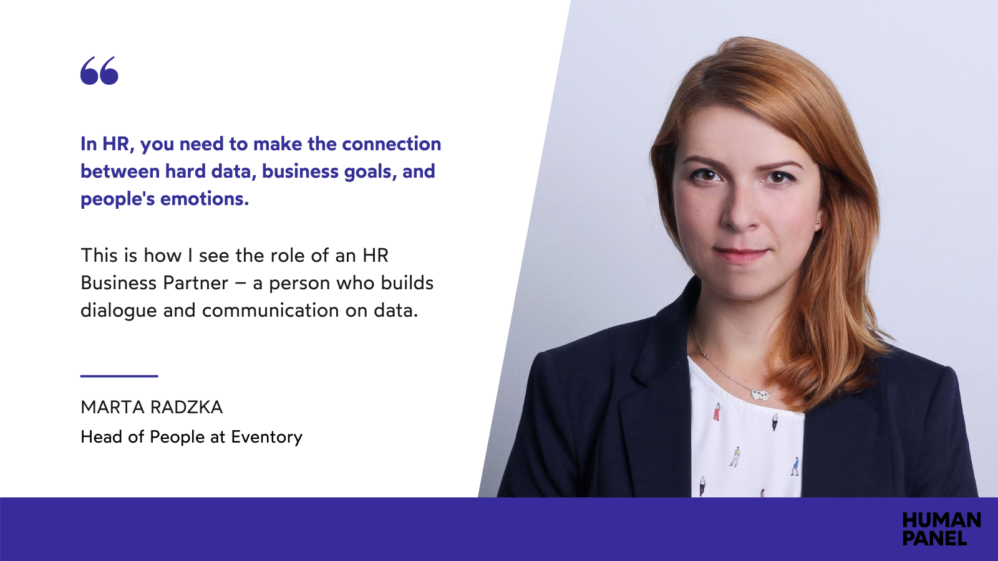How I started people analytics at a startup

Marta Radzka, Head of People at Eventory, shares key insights on how she got started with people analytics at a startup, and the results she’s seen.
Marta Radzka has always been interested in people. She graduated with a degree in psychology and started her journey with HR. Along the way, she has worked with several startups where she started using people analytics. Today Marta works for Eventory, an all-in-one event management, marketing and networking software for professional event organizers.
She shared her thoughts and experiences about starting people analytics at a startup with Human Panel.
Marta Radzka: How I started with HR analytics
I have been working on HR for years and have always worked in small organizations. In such companies, HR is very close to the business and close to the decision making. I have always seen my role at HR as one of connecting people and businesses – a true business partner.
Working for startups facilitated the start of my journey with people analytics. The lack of hierarchy and a flat structure meant I had a direct influence on C-level decisions.
I started getting involved with data, and although I had a bumpy relationship with Excel, I discovered how useful data is – even when you are working with up to 30 people. Today, I believe that the earlier you begin, the better. You can start small, but when you scale up, you’ll already have the data and will not have to recreate it from a rusty spreadsheet or, in the worst case, your own memory.

What HR metrics to track in a startup
The first thing you should measure when you are just getting started with HR analytics is the cost of recruitment and the cost per hire. Why? Today’s market is very demanding and hiring costs are high. Therefore, it is always advisable to check whether it is better to keep an employee and invest in their development or to hire a new, more experienced person.
The second metric I think is worth tracking is the source of hire. Analyzing your recruitment funnel can be very valuable: where most candidates come from and what the source of the candidate was that we ended up hiring.
If I can go to my manager and say, “Listen, I’d recommend that you put an ad on page X because that’s where we find the most valuable employees,” that’s the essence of recruitment analytics.
Then I would start measuring turnover, knowing that it’s going to be different than in corporate HR – there will not be any retirements, for example. Measuring turnover by department, manager and compensation can already tell you a lot about your employees. What makes them want to stay with the company? Is it the culture, the money, the managers? How attractive are my positions?
Of course, sometimes you create junior or support positions that inherently have higher turnover. In that case, do everything you can to lower the hiring and onboarding costs for those positions.

Be systematic in your data gathering
What I also track is satisfaction. I regularly conduct pulse surveys and measure employee satisfaction. I find that eNPS is the most effective metric, and today it is especially important because of the remote work environment. It’s best to check it often and regularly because then you can track any changes. And the best part is that you can even do this with free online tools, although people analytics software is very helpful.
An important point is to present the results – do not just collect the data for the sake of it or to show it to the board. Employees need to know why they are filling out the forms and why they are being asked certain questions. Always give feedback – only then will people know why you are measuring certain things and be more willing to cooperate.
The most important thing is that you collect data from the beginning, and do it regularly and methodically. If you do that, you can analyze the information you have and draw conclusions. In HR, you need to make the connection between hard data, business goals, and people’s emotions. This is how I see the role of an HR Business Partner – a person who builds dialog and communication on data.
Data is a powerful tool. You do not talk to your managers anymore and say, “It feels that way to me.” You do not talk to your employees that way anymore, either – you have data to back up everything you say.
People analytics at a startup – what do I recommend most?
- Start analyzing employees and collecting data, even if not everyone seems convinced to do so at first. It will pay off in the future.
- Do not be afraid of the tools – or lack of tools. A people analytics platform is a great solution, but you can also use spreadsheets.
- If you are not comfortable with data analysis, sign up for an HR analytics course. There are many out there and they are affordable for smaller businesses.
- On the other hand, do not underestimate your skills. People analytics is not rocket science and you can do it!
- Be systematic. Even if you take one day a month to do a thorough analysis, it will work to your advantage.
Do you also work in a startup or scaleup and you’re not sure whether you need people analytics tool to start your journey? Sign up for a free demo and see what Human Panel offers and what we can do for you. Do you want to recruit people more effectively? Are you struggling with high turnover? We can tailor the solution both to smaller companies and bigger players. Don’t wait and see people analytics in action!



